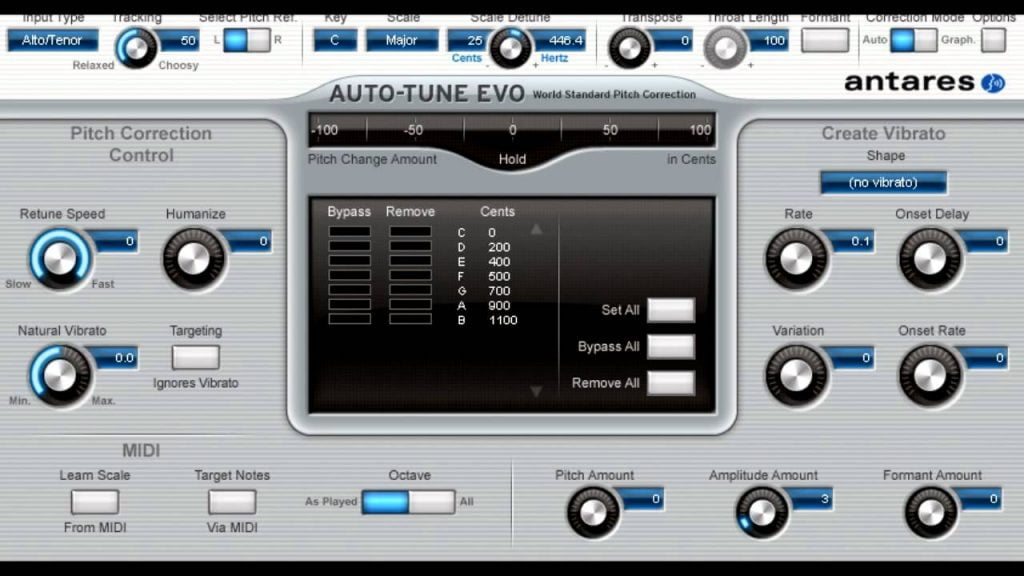The science behind Auto-Tune includes refined digital signal processing methods to analyze and manipulate the pitch of an audio sign. Here's a breakdown of the key scientific ideas behind Auto-Tune:
1. Pitch Detection:
Frequency Analysis: Auto-Tune begins by analyzing the incoming audio sign by way of a process called frequency evaluation. This involves breaking down the complicated waveform of the audio sign into its constituent frequencies.
Fundamental Frequency Detection: The fundamental frequency, which corresponds to the perceived pitch of the sound, is recognized. In the context of vocals, that is the pitch of the sung or spoken notice.
2. Reference Pitch Comparison:
User-Defined Settings: The detected pitch is then in comparability with a reference pitch or musical scale set by the person or the music producer. The reference pitch represents the intended or right pitch for the performance.
Scale and Key Settings: Auto-Tune permits users to specify the musical scale and key of the track. This info helps in making more correct pitch corrections primarily based on the context of the music.
three. Pitch Correction:
Algorithmic Correction: If the detected pitch deviates from the reference pitch, Auto-Tune applies corrective processing. https://soundshockaudio.com/free-autotune-vst-plugins/ to deliver the detected pitch consistent with the reference pitch.
Correction Speed: Auto-Tune offers control over the speed at which pitch correction is utilized. Faster correction instances end in extra quick corrections, whereas slower settings create a smoother, more natural-sounding effect.
4. Graphical Interface:
Visual Representation: Many versions of Auto-Tune feature a graphical interface that displays the pitch of the enter signal over time. This visual representation permits producers and engineers to see the pitch corrections and make guide adjustments if needed.
Time Domain vs. Frequency Domain Processing: The graphical interface usually represents the correction course of in each the time domain (waveform) and the frequency area (pitch analysis), offering a complete view of the correction course of.
5. Creative Effects:
Intentional Pitch Manipulation: Beyond corrective capabilities, Auto-Tune can be utilized for intentional pitch manipulation to create distinctive vocal effects. This involves exaggerating pitch correction to attain the attribute "auto-tuned" sound.
Stylistic Choices: Artists and producers use Auto-Tune creatively to make stylistic choices that contribute to the general sound and character of a music.
6. Real-Time and Post-Processing:

Real-Time Correction: Auto-Tune can function in real-time during reside performances, providing instantaneous pitch correction. This requires low-latency processing to ensure minimal delay between the input sign and the corrected output.
Post-Processing: In the studio, Auto-Tune is usually applied as a post-processing effect during recording or mixing. This allows for more exact changes and artistic experimentation.
7. Customization:
Adjustable Parameters: Auto-Tune provides varied adjustable parameters, together with correction velocity, scale settings, and key settings. This customization permits users to tailor the pitch correction to the specific needs of a efficiency.
eight. Advanced Techniques:
Formant Shifting: Some variations of Auto-Tune include formant shifting capabilities, permitting for manipulation of the vocal timbre whereas preserving the pitch correction.
Note Transition Handling: Advanced algorithms deal with transitions between totally different notes, ensuring smooth and natural-sounding pitch corrections.
In summary, Auto-Tune operates on the intersection of digital signal processing and music principle. It leverages subtle algorithms to analyze, examine, and manipulate the pitch of audio indicators, providing both corrective and artistic prospects in music production. The continuous evolution of Auto-Tune technology displays developments in sign processing and the continued quest for new and progressive soundscapes in the music industry..
